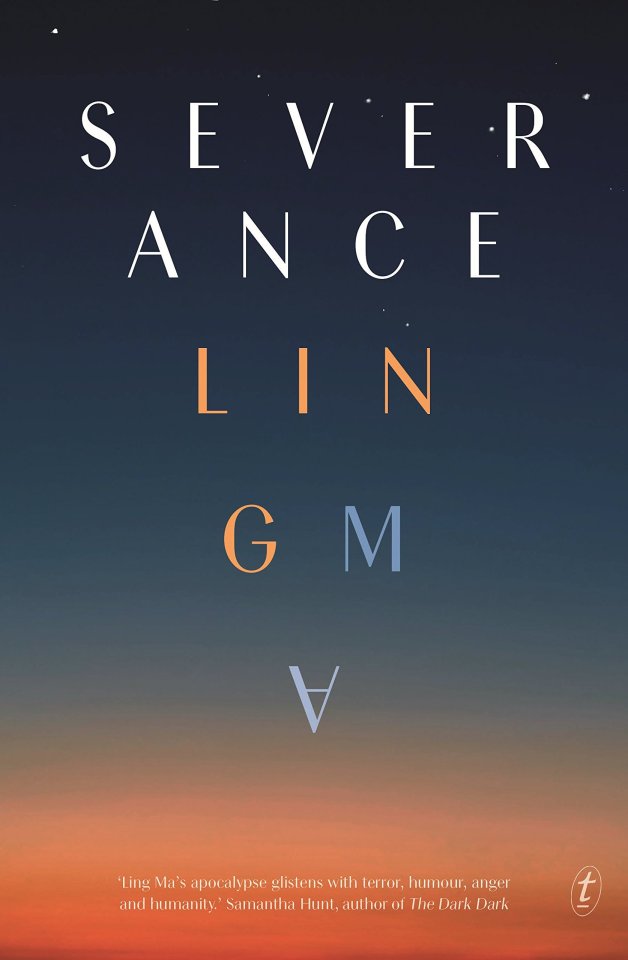#Unexpected development in covid nursing this season
Explore tagged Tumblr posts
Text
Plagueblogging / covid nursing 2023
#Unexpected development in covid nursing this season#Generally the intensity of covid itself seems to be less#Compared to this time last year#I guess different variant plus widespread vaccination in the older demographic especially#So now rather than high octane respiratory nursing#It's worked out now that we've got room and there's a rolling forever outbreak#That now we are getting send all the cancer oncology renal haematology patients that test positive#So now instead of general medical nursing#It's leaning much heavier towards oncology nursing#Which is. Idk there's a shift#Usually with medical it's a really obvious decline as people go towards end of life and we can make it relatively graceful#But man brain mets are another beast#There's a patient I never met but was just there for the edges of#And I think it will be a while before they don't linger in my mind#I'm so glad the family were onto it and we're accepting and understood her journey#And she was able to pass peacefully with them there#But man I'm glad I wasn't the one who had to make those calls#I was guiding the new grad with advice but they ultimately made different choices than I would#Luckily the patient and family's wishes were able to be followed#But imagining the what ifs of me being in that position had me bursting into tears again#Good practice#I'd have to know to find my voice and ask the question - do you want me to call a medical emergency or do you want some quiet?#That's not a question we usually have to ask because it's not usually so quick so the goals of care can be updated#Cancer cw
4 notes
·
View notes
Text
10 Essential Insights on Being a Registered Nurse: A Guide to Thriving in Healthcare
10 Essential Insights on Being a Registered Nurse: A Guide to Thriving in Healthcare
10 Essential Insights on Being a Registered Nurse: A Guide to Thriving in Healthcare
The nursing profession is both rewarding and challenging. As a registered nurse (RN), you’re at the forefront of patient care, and your role is crucial in the healthcare ecosystem. This article provides 10 essential insights that can help nurses not just survive, but thrive in their careers. Whether you’re a seasoned professional or just starting, these insights will empower you to enhance your practice and improve patient outcomes.
1. Understand the Importance of Compassionate Care
Compassion is at the heart of nursing. Understanding the emotional and physical needs of patients can significantly impact their recovery. A study conducted by the American Association of Colleges of Nursing highlights that compassionate care leads to better patient satisfaction and recovery rates. Here are some tips for providing compassionate care:
Listen actively to your patients.
Show empathy in your interactions.
Tailor your communication style to each patient’s needs.
2. Continuous Education is Key
Healthcare is an ever-evolving field. Engaging in continuous education ensures that you stay current with medical advancements and best practices. Consider pursuing:
Specialized certifications.
Online courses related to new technologies.
Conferences and workshops.
Doing so enhances your skill set and makes you a valuable asset to your healthcare team.
3. Build Strong Relationships with Colleagues
Creating a supportive work environment is essential. Foster strong relationships with your colleagues to promote teamwork and effective communication. Strategies include:
Participating in team-building activities.
Being open to constructive feedback.
Encouraging a culture of collaboration.
4. Time Management Skills are Crucial
As a nurse, you juggle multiple tasks simultaneously. Effective time management can lead to improved patient care and personal job satisfaction. Consider implementing these strategies:
Prioritize tasks based on urgency and importance.
Utilize digital tools for scheduling.
Take regular breaks to maintain focus.
5. Understanding Patient Advocacy
Nurses often act as advocates for their patients, ensuring their voices are heard. Being an effective patient advocate involves:
Educating patients about their rights.
Supporting them in making informed decisions.
Addressing any concerns or issues they may have.
6. Adaptability is Essential
The healthcare environment can change rapidly. Being adaptable allows you to handle unexpected situations effectively. Here’s how to cultivate adaptability:
Stay informed about changes in healthcare policies.
Embrace technological advancements.
Practice stress-reducing techniques when facing challenging situations.
Case Study: Adaptability in Action
Consider the case of Sarah, an RN working in a busy emergency department. When the COVID-19 pandemic hit, Sarah quickly adapted by learning about new protocols for infection control and telehealth practices. Her ability to adjust not only improved her confidence but also ensured that her patients received safe, high-quality care.
7. Focus on Professional Development
Investing in your professional development can enhance your career trajectory. Strategies include:
Seeking mentorship opportunities.
Joining professional organizations like the American Nurses Association.
Setting career goals and creating actionable plans.
8. Embrace Technology
Technological advances in healthcare are transforming patient care. Familiarizing yourself with Electronic Health Records (EHRs) and telemedicine platforms can improve your efficiency. Consider the following:
Participate in training to learn new software.
Explore apps that aid in patient education and care management.
Stay updated on the latest technological trends in nursing.
HTML Table: Benefits of Embracing Technology in Nursing
Benefits
Description
Improved Efficiency
Streamlining documentation and patient tracking.
Enhanced Communication
Facilitating clear dialogue among healthcare team members.
Better Patient Engagement
Providing easy access to health information.
9. Prioritize Self-Care
Your well-being influences your ability to provide excellent patient care. Prioritize self-care by:
Engaging in regular physical activity.
Maintaining a healthy diet.
Allocating time for hobbies and relaxation.
10. Stay Resilient
The nursing profession can be emotionally and physically demanding. Cultivating resilience helps you manage stress and prevent burnout. Strengthen your resilience by:
Seeking support from peers or supervisors.
Practicing mindfulness and meditation.
Setting realistic goals and expectations for yourself.
Conclusion
Being a registered nurse is a fulfilling profession that requires a combination of skill, dedication, and passion. By understanding these 10 essential insights, you can enhance your career and make a significant impact on your patients’ lives. Embracing compassionate care, continuous education, and self-care practices will not only help you thrive in the fast-paced healthcare environment but also ensure you remain a key player in promoting wellness and healing. Stay inspired, continue learning, and remember that your impact as a nurse is profound.
youtube
https://nursingcertificationcourses.com/10-essential-insights-on-being-a-registered-nurse-a-guide-to-thriving-in-healthcare/
0 notes
Text
10 of the best pandemic novels
It’s an understatement to say that the world as we know it has changed insurmountably over the last few weeks. We’re apart from our loved ones, most of our summer plans have been cancelled and we’re faced with more uncertainty than ever before. Pandemics and plagues have been present in horror, sci-fi and post-apocalyptic books for decades and they’ve always seemed to be exactly that. Abandoned cities, fast-acting deadly diseases and epic efforts for survival are things that happen in different worlds to our own but of course, they’ve never reflected reality more than they do right now.
I’ve been using this time to research and read a bunch of books that deal with pandemics and I wanted to share 10 of the very best of them with you. I completely understand if you’re trying to avoid these kinds of reads at the moment to limit anxiety or simply to escape. That’s why I also have a list of feel-good reads especially for you!
1. The Stand by Stephen King

The Stand is a book you’ll see on every pandemic fiction list because it is widely considered to be King’s masterpiece. The virus is really just the beginning of this enormous tome as its proceeded by ominous dreams, the inevitable end of days and the very real eternal battle between good and evil -perhaps not unlike some of your recent political discussions? Typical of a King novel, it’s populated by a huge cast of morally complex, tragic characters and there is an overwhelming sense of dread from the very first chapter. Expect a harrowing atmospheric read that will stay with you for a long time.
2. The Girl With All The Gifts by M. R. Carey

Essentially, it’s a zombie book but it’s also so much more than that. Set in a world where ‘hungries’ roam the wastelands, a select group of infected but high-functioning children are contained in a special facility. Amongst a ruthless scientist, a kindly teacher and a wary sergeant, child genius Melanie’s story will become one that haunts you in the middle of the night. It’s a classic page-turning thriller that isn’t an exact reflection of our current world but there are some eerie likenesses that will have you questioning who the real monsters are.
3. Station Eleven by Emily St John Mandel

Station Eleven is so full of believable situations and characters that I could easily see the end of the Earth looking exactly like this huge sprawling landscape, dotted with towns populated by small groups of suspicious, scared people. It chiefly follows five principal characters -seasoned Hollywood actor Arthur Leander who dies on stage during a production of King Lear, his incredibly talented but unappreciated first wife Miranda, his oldest friend Clark, Jeevan Chaudhary who tried to save him and Kirsten, one of Arthur’s child co-stars whose life has been shaped by the events of that fateful night. It’s a beautifully written, expertly constructed book that explores loss, resilience and the heartbreaking notion of desperately trying to hold on to the past. You’ll want several boxes of tissues for this one!
4. The Fireman by Joe Hill

Ok, so the virus in this one isn’t QUITE like COVID-19 but the intense fear, teetering sanity and unexpected small rays of hope aren’t unlike our current set of feels. Dragonscale marks its host with black and gold and burns them up from the inside causing them to eventually spontaneously combust and no one appears to be safe from this horrifying end. We follow pregnant nurse Harper who bears the ominous marks but is desperate to live long enough to give birth and the mystery of the Fireman -an afflicted man who has somehow learned to control the fire within him. It’s a very original premise and although it’s another beast of a book at over 700 pages, it will have you gripped from the very first page.
5. The Book of M by Peng Shepherd

There’s something about memory that feels so precious to me. It may be because in a normal functioning brain, it’s the only thing that constantly keeps us company and therefore, in some ways it’s like an old friend. The Book of M features a virus where shadows have begun to disappear, leaving their humans with a strange new power but also with a rapidly deteriorating memory. Following Ory and Max -two halves of a couple who have been torn apart by the prospect of heartbreak- we meet a bunch of wonderful characters on a journey to New Orleans, where sanctuary reportedly awaits. I stayed up late to finish it because I became so invested in getting these characters back together but I was left completely thrown and sobbing my eyes out by the very cruel twist at the end. Yeah... brace yourself!
6. The Last Town On Earth by Thomas Mullen

Set in 1918 in Washington state, this story follows a small quarantined town trying to stave off the Spanish influenza. The effects of financial instability on the community, the fear of the unknown and the erratic actions of a panicked mind will definitely seem familiar in our current world. It’s an enclosed domestic drama with a lot of social history, tear-jerking moments and a truly explosive ending. I’m delighted that I discovered this emotional hidden gem!
7. Skin by Liam Brown

Skin describes a world with an extreme version of a COVID-esque virus. Everyone must completely isolate from everyone else including the people they live with and can only communicate from separate bedrooms via technology. But then our protagonist Angela spots a man outside without any protective gear on and he doesn’t even seem to be slightly sick. Full of intrigue, complex characters and a twist in the tale, it’s a fast read with a lot to say about contemporary society via a wry cynical voice.
8. Severance by Ling Ma

Candace Chen is a routine-loving millennial who turns ghost city photo-blogger when the deadly Shen Fever sweeps New York. Joining an eclectic band of survivors on a trek to a supposed sanctuary, she is harboring a secret of epic proportions. Things get progressively darker as the group begins to develop a cult-like dynamic and the seemingly self-elected ‘leader’ Bob becomes increasingly tyrannical. The sudden jolt out of ordinary life and the making and breaking of human relationships in times of hardship mixed with a touch of satire makes for a thoroughly entertaining, topical read.
9. Wilder Girls by Rory Power

I love a good boarding school novel and this is possibly the darkest, most unique one I’ve ever read. The Tox has left multiple pupils at Raxter School For Girls with deformities and they’re now waiting patiently for a cure. But then Hetty’s best friend Byatt goes missing and suspicion heightens as to what’s really happening on the remote island. I couldn’t shake the feeling of doom for the entire time and there was such a heavy gloomy atmosphere that seeps through the pages. There was a lot of buzz around this book on YA Twitter when it was released late last year and it’s definitely worth all of the hype!
10. Oryx and Crake by Margaret Atwood

This impeccably strange, enchanting novel is a little glimpse into some of the weirder rooms of Atwood’s mind. Snowman lives in a tree on a deserted beach and spends his days foraging for scraps and mourning his best friend Crake and the woman he loved, the enigmatic Oryx. He seems to be the only human left but somehow he has become a prophet-esque figure to the beautiful, ethereal Children of Crake. The actual virus doesn't appear until the final 50 pages but we see the effects of it from the very beginning, so I was pretty eager to find out exactly what had happened, which kept the pages turning. Although it is funny in places and exceptionally thought-provoking, there is a lot of disturbing content to be aware of including animal experimentation and child trafficking and sexual abuse. It’s a horrifying window into a possible future if extreme capitalism and the fast advances in genetic engineering were ever to meet in a head-on collision.
10 notes
·
View notes
Text
COVID19 Updates: 08/16/2021
UK: Daughter of fully-vaccinated man who died after complications from Covid urges people to take precautions even if they have been double-jabbed LINK
Iceland: Iceland‘s main ICU strained by new Covid-19 cases LINK
Israel: Israel Reports 65% Of Seriously Ill COVID Patients Are Vaccinated LINK
US: US epidemiologist Michael Osterholm warns of impending catastrophe as children are sent into unsafe schools LINK
China: The Figure Skating Grand Prix Cup of China has been cancelled due to limited international and domestic flights and the current restrictions re COVID-19. The ISU is inviting other ISU Members to be an alternate host for a GP event this season.
China: By the combined efforts of medical staff and citizens, #Covid19 in Nanjing is under effective control. Zero infected cases were reported for 3 straight days since August 13th. (I call bullshit)
UK: UK new cases today: 28,438; Last Monday: 25,161
Israel: Israel COVID update: 46 new deaths, highest since February - New cases: 4,464 - Average: 5,554 (+187) - In hospital: 917 (+90) - In ICU: 124 (+11) - New deaths: 46
US: Pediatric COVID hospitalizations in the US are increasing rapidly, and have already passed the levels we saw in the winter surge. LINK
Australia: Hundreds of unarmed defence personnel joined thousands of extra police to set up roadblocks and enforce COVID-19 lockdown rules in parts of Sydney on Monday, while dozens of new venues were added to a list of exposure sites in Melbourne. LINK
Jamaica: JUST IN: Jamaica has now recorded the highest positivity rate of 46.1% since the onset of the Covid-19 pandemic. The Health & Wellness Ministry confirmed 513 new cases, 11 deaths, and there are now 443 hospitalizations.
New York: #NEW: By Monday, Sept. 27, all health care workers in NY will be required to be vaccinated against COVID. This includes staff at: - hospitals - long-term care facilities - nursing homes, adult care & other congregate settings LINK
World: How SARS-CoV-2 Evades And Suppresses The Immune System (Part 3) LINK
North Carolina: Duke University sees a cluster in vaccinated students from indoor events. LINK
Texas: El Paso: The city's #COVID19 report indicated that a person who was fully vaccinated died from the coronavirus this past week. The city also reported 189 new breakthrough cases. LINK
North Carolina: Duke, UNC see unexpected COVID-19 clusters among vaccinated students LINK
Nebraska: Five weeks later, Douglas County COVID-19 cases more than seven times higher | Fully vaccinated man in his 80s dies. #COVID19 #OmahaMetro LINK
Indiana: Alert to Marion County parents: Don’t send your kids to school with COVID-19 #NewsBreak LINK
China: China, the WHO and the powergrab that fuelled a pandemic LINK
US: Shocking & Dehumanizing Discrimination Against The Unvaxx'd Is About To Make Life Very Difficult LINK
US: Former CDC Director Redfield: We need a comprehensive bipartisan investigation into the origin of Covid-19. Until then, we call for a world-wide moratorium on gain-of-function research while authorities develop a clear and careful policy to help prevent the next pandemic.
Georgia: Georgia school district closes for two weeks. LINK
Texas: Texas has requested 5 mortuary trailers from the federal government in anticipation of an influx of dead bodies as Covid-19 surges across the state, state officials say. LINK
Georgia: Falcons have reached a 100-percent vaccination rate Falcons are first NFL team to have every player vaccinated against COVID-19 LINK
US: Pfizer submits initial data for its COVID-19 booster shot to FDA LINK
St. Lucia: #BREAKING - Saint Lucia records 109 new COVID-19 cases - taking tally to 6,475 (809 active); positivity rate stands at 40%
Wisconsin: The clinical trial of Moderna’s COVID-19 vaccine in children under 12 at UW Health, which started accepting participants Friday, was filled on Monday.
Georgia: Two newborns among dozens of Georgia children hospitalized with COVID-19 LINK
Mississippi: A 32 y.o. pregnant woman was admitted to a Mississippi hospital and died from COVID. Her last act was giving birth to her baby girl. Tragically, the baby's father also died from COVID, leaving the newborn a ward of the state. LINK
0 notes
Text
Social distancing for COVID-19: Buying time to reinforce the front
Hi everyone, just an update as a lot of you across several social media have been in touch with me about coronavirus Q&A’s and the possibility of posting up a weekly, detailed FAQ here on your questions; as some of you have heard, I’ve had to put that aside for now since, alongside primary duties, I’m working on applying a bioinformatic system I developed years ago in a bid to help more rapidly identify promising COVID-19 drug candidates. It’s a bit of ad hoc improvisation at best on a pre-developed resource, and even under the most optimistic scenarios there’s not going to be a cure with this, only some extra tools in the therapeutic arsenal to reduce COVID-19 severity and expedite recovery. But for that very reason, I wanted to don my public health hat one more time before going on quasi-social media hiatus, since even the most promising new SARS-CoV-2 treatment prospects won’t amount to much if the (already imminent) torrent of new COVID-19 cases rises even more steeply than it already is to swarm US hospitals: Please, please diligently follow all the social distancing measures being outlined by public health authorities to the letter, especially avoiding mass gatherings and taking pains to wash hands thoroughly after touching surfaces with high contact (such as doorknobs and handles).
I know how stir-crazy things are getting right now especially with all the mounting anxiety (and desire to assuage it with public get-togethers to greet springtime’s arrival), but having lately been in touch with medical colleagues in US epicenters like Seattle, NYC, San Francisco -- even unexpected hotspots like Kansas City, Phoenix, and Orlando -- I can’t emphasize this point enough: the nightmare scenarios we’ve been witnessing recently in parts of Italy, Spain, Britain and the Middle East aren’t worrisome hypotheticals anymore, they’ve already arrived in many regions of the United States. American hospitals are being inundated, we’re critically low on PPE (personal protective equipment) and test kits for complex reasons I don’t want to get into here, and healthcare workers are themselves suffering casualties from infection even with full-body protective gear -- the bottom line is we’re on a war footing in the US, in the most concrete sense imaginable. And we need assistance from all corners to relieve pressure on the front: the medical centers being overwhelmed with a rapid surge in COVID-19 cases. As abstract and intangible as it can often seem at times, social distancing and contagion control, practiced at an individual + small group level X millions of Americans, is absolutely crucial to flatten the curve and buy the time we need to get reinforcements in the form of additional ventilators and supplies, vaccines, and treatments to improve survival and recuperation.
While all of us are liable to slip up from time to time amid the strictures of the lockdowns and shelter-at-home orders, there are still far too many cases of heedless, gratuitous mass assemblages like the Spring Break parties down in Florida or the multitudes thronging in Bondi Beach, Australia. For all practical purposes, those crowds right now are mass Petri dishes for SARS-CoV-2 to multiply like mad and launch new chain reactions to infect millions more people. I realize this sounds grisly but regrettably, that’s how aggressive this microbial foe is. In the lingo of viral epidemiology, this betacoronavirus -- the taxonomic subgroup to which SARS-CoV-2 belongs -- has a significantly higher R0 (R naught) than the flu, a metric of its contagious capacity; is now known to linger in the air for potentially hours; and is transmissible on many fomites (surfaces with frequent human contact) for days. It has a long incubation period (now thought to be around five days) during which it can be disseminated before a victim is symptomatic, and is thus uniquely capable of exponential spread. The US was also relatively slow to ramp up testing compared to South Korea and Italy (with the Koreans testing 20,000 a day, until recently more than America in a month), which means that undetected community spread has been rampant in the USA for weeks. Brisk strolls in the park and exercise al fresco are fine to break the cabin fever, but especially at this point, large gatherings are a formula to mass-disseminate SARS-CoV-2 still further and utterly deluge America’s already limited supply of hospital beds, ICU rooms, ventilators, and hospital staff to provide treatment. Keep in mind that COVID-19 is slamming us on top of a ruthless flu season and an increase in other medical issues to boot, all of which are being pushed aside to triage for the novel coronavirus avalanche. And then you have another accelerant to the vicious cycle with the attrition from nurses and doctors falling ill (which is exactly what happened to me as a doctor in a previous epidemic from pertussis, requiring years to recover).
Not trying to sound dismal here, but to provide a critical reality check on how basic behavioral modification by communities across the USA, on a mass scale, is pivotal to prevent an overwhelming and potential collapse of the US healthcare apparatus if the caseload surges still further; as dark as things are right now, there is real prospect for hope on the horizon if we can make it through the gauntlet we’re facing in the next few months. We’ve been here before, after all, with horrific pandemics like the 1918 Spanish flu (a misnomer as it may have originated right here in Kansas in a WWI army barrack) and numerous smallpox, typhus, cholera, polio, yellow fever, and even plague epidemics ravaging the US before the era of mass immunization or antibiotics for bacterial contagions. Early vaccine research is promising, though it can’t be rushed much beyond the (likely minimum) 18 month lag time due to vaccines’ administration to healthy people, and the technical difficulty of ascertaining the most immunogenic cocktail to prime the immune system. And there are dozens of resourceful research and clinical groups across the world right now seeking to develop new COVID-19 drugs or redirect old ones, to which I’m contributing. Many countries have successfully beaten this thing and protected their populations with aggressive public health measures, particularly Taiwan, Vietnam, South Korea, Singapore, China (with rigorous control after the initial blunders and half-measures in Hubei), Hong Kong, and some countries in Europe and South America. COVID-19 takes a level of mobilization and mustering of public resources beyond any we’ve had to marshal in recent decades, far more than the H1N1 swine flu pandemic in 2009 or Ebola in 2014, but it can be and has been managed successfully. So we don’t have to despair, because new tools are on the way to help us prevail.
Yet this makes it all the more important to buy time for such relief and reinforcements to be produced and arrive at the front. And just to be clear, such public health measures are imperative for all demographics, including younger ones. Contrary to conventional wisdom at the outset, more recent findings are showing that COVID-19 is quite dangerous to children and young adults, much more so than initially thought. The early complacency about this may simply have resulted from the sheer scale of China’s all-out effort to contain the contagion once Wuhan’s and Hubei’s authorities woke up to it, and the similar success of Taiwan and South Korea with mass testing, tracking, and selectively targeted isolation. This nipped SARS-CoV-2’s spread in the bud in East Asia, not only forestalling further infection but also probably reducing viral load and severity of the infectious course among those who did catch it, particularly children. Unfortunately, the comparative lack of early testing, screening, tracking, and isolation in the US and many other Western countries translates into greater sick contact density and a potentially higher viral load for infections here, which raises the danger level for everyone, including kids and college students at beach parties. (For the technically-minded among you out there, the paper in Amer J Respir Crit Care Med, 2010, by DeVincenzo et al., has a good summary of how initial viral load can greatly exacerbate pediatric infection severity: https://www.ncbi.nlm.nih.gov/pmc/articles/PMC3001267/ ) We likewise know that there at least two major strains of this deadly coronavirus -- S-type and L-type -- and now possibly more given its high mutation rate.
Moreover, not only is COVID-19’s lethality at least an order of magnitude higher than the flu, but it also has an alarmingly high rate of serious illness in acute cases, and we know precious little about medium or longer-term sequelae; not to mention that SARS-CoV-2 is hardly confined to the lungs but has been shown to affect the liver and GI tract, kidneys, and even central nervous system in many patients. And it’s not yet clear why, but immunity to COVID-19 seems to wane precipitously in many patients infected by SARS-CoV-2, leaving them vulnerable to deadly re-infections -- a likely reason that initial attempts to achieve “herd immunity” through clustered infection (as opposed to immunization) in some countries, as trial-ballooned in e.g. the UK and Australia, have had catastrophic results and been abandoned. There’s not going to be a magic bullet or straightforward victory here. This is going to be a months-long grind as the infectious curve is flattened and new options emerge to mitigate contagious spread and facilitate recovery in those already afflicted. Meanwhile, communities across the country need to do everything possible to buy time for the aforementioned reinforcements to arrive, and this means rigorous adherence to social distancing and other measures announced by authorities to break the chain of contagion. We will get through this; please keep safe everyone. -- J. Wes Ulm, MD, PhD
#covid19#covid-19#coronaviruspandemic#coronavirustreatment#coronavirus#SARS#sarscov2#newtreatments#herdimmunity#plague#contagion#pandemic#sarscov#socialdistancing#shelterathome#vaccine#coronavirus vaccine#immunization#ageofcorona#hospitals#covid-19 cases#icu#respirators#healthcare workers#doctors#physician#healthcareworkers
0 notes
Text
Ukraine’s Backlog of Babies Born to Surrogates Begins to Ease
KYIV, Ukraine — For weeks, more than 100 foreign genetic parents of babies born to surrogate mothers in Ukraine have been waiting nervously, prevented by Ukraine’s rigid coronavirus restrictions from entering the country to pick up their newborns.
But the government has been granting some exemptions, and on Wednesday, having gone through a mandatory two-week quarantine, 11 couples from Argentina and Spain were joyously united with their newest family members. It was a first step in whittling down a backlog of babies born into Ukraine’s surrogate motherhood industry during the pandemic that some officials have said could swell to as many as 1,000.
“It was like a dream,” Andrea Diez, a mother from Argentina, said Wednesday after she was handed her baby at a news conference hosted by a surrogacy agency, Biotexcom.
Biotexcom, which has faced criticism over the backlog, staged the event for maximum effect, bringing out the babies and uniting them with their joyful parents for the first time.
With permissive legislation, high-quality private maternity hospitals and an abundance of poor women, Ukraine has in recent years become the leading country providing surrogacy services to foreigners, industry executives and women’s rights advocates say.
For the most part, the surrogacy agencies care for most of the babies, though some have been left with the surrogate mothers. Biotexcom, the largest such agency, is caring for 79 babies in cribs in a hotel and clinic in Kyiv. The company is expecting two more births on Wednesday.
The baby pickup on Wednesday is a step toward unwinding the problem, one of the more bizarre to arise from travel restrictions imposed to limit the spread of the coronavirus.
But the schedule for pickups so far is slower than the rate of births, so the stranded surrogate babies are still growing in number in Ukraine.
The authorities have estimated that 1,000 surrogate mothers are expecting. So far, 120 genetic parents of 125 babies have asked for assistance with travel, and 31 couples have arrived, including the 11 who met their babies on Wednesday, according to Lyudmila Denisova, Ukraine’s human rights ombudsman. The U.S. Embassy in Kyiv said in a statement that it had helped six American parents travel to Ukraine.
Ukraine is an outlier among nations, though not alone, in allowing foreigners access to a broad range of reproductive health services, including buying eggs and arranging for surrogate births for a fee. Ukrainian law grants custody to the genetic parents.
Ms. Diez and her husband, Fernando Montero, both 46, said they turned to Ukraine for a surrogate mother after years of failed fertility treatments in Argentina.
They named their son Ignacio (and nicknamed him Nacho). Born April 29, he spent the first month and a half of his life cared for by nurses in a room packed with cribs.
The baby pileup has revived criticism of the business in Ukraine.
Biotexcom has been criticized for sometimes impregnating surrogate mothers with three embryos, increasing the chances of a successful pregnancy but risking an abortion if all three develop.
“We do it for the result,” Albert Tochylovsky, the company director, said in an interview. “We work for the result.”
La Strada, a women’s rights group, said it received about 100 calls a year from surrogate mothers seeking help. In most cases, the women are upset about having to hand over the baby, said Maryna Lehenka, the group’s legal director, indicating “insufficient psychological support for women who go into surrogacy programs.”
Other surrogate mothers have expressed appreciation for the pay — around $15,000 per birth, if everything goes right — and the chance to help infertile couples. But some are upset by the total separation from the babies once they have given birth.
Updated June 5, 2020
Does asymptomatic transmission of Covid-19 happen?
So far, the evidence seems to show it does. A widely cited paper published in April suggests that people are most infectious about two days before the onset of coronavirus symptoms and estimated that 44 percent of new infections were a result of transmission from people who were not yet showing symptoms. Recently, a top expert at the World Health Organization stated that transmission of the coronavirus by people who did not have symptoms was “very rare,” but she later walked back that statement.
How does blood type influence coronavirus?
A study by European scientists is the first to document a strong statistical link between genetic variations and Covid-19, the illness caused by the coronavirus. Having Type A blood was linked to a 50 percent increase in the likelihood that a patient would need to get oxygen or to go on a ventilator, according to the new study.
How many people have lost their jobs due to coronavirus in the U.S.?
The unemployment rate fell to 13.3 percent in May, the Labor Department said on June 5, an unexpected improvement in the nation’s job market as hiring rebounded faster than economists expected. Economists had forecast the unemployment rate to increase to as much as 20 percent, after it hit 14.7 percent in April, which was the highest since the government began keeping official statistics after World War II. But the unemployment rate dipped instead, with employers adding 2.5 million jobs, after more than 20 million jobs were lost in April.
Will protests set off a second viral wave of coronavirus?
Mass protests against police brutality that have brought thousands of people onto the streets in cities across America are raising the specter of new coronavirus outbreaks, prompting political leaders, physicians and public health experts to warn that the crowds could cause a surge in cases. While many political leaders affirmed the right of protesters to express themselves, they urged the demonstrators to wear face masks and maintain social distancing, both to protect themselves and to prevent further community spread of the virus. Some infectious disease experts were reassured by the fact that the protests were held outdoors, saying the open air settings could mitigate the risk of transmission.
How do we start exercising again without hurting ourselves after months of lockdown?
Exercise researchers and physicians have some blunt advice for those of us aiming to return to regular exercise now: Start slowly and then rev up your workouts, also slowly. American adults tended to be about 12 percent less active after the stay-at-home mandates began in March than they were in January. But there are steps you can take to ease your way back into regular exercise safely. First, “start at no more than 50 percent of the exercise you were doing before Covid,” says Dr. Monica Rho, the chief of musculoskeletal medicine at the Shirley Ryan AbilityLab in Chicago. Thread in some preparatory squats, too, she advises. “When you haven’t been exercising, you lose muscle mass.” Expect some muscle twinges after these preliminary, post-lockdown sessions, especially a day or two later. But sudden or increasing pain during exercise is a clarion call to stop and return home.
My state is reopening. Is it safe to go out?
States are reopening bit by bit. This means that more public spaces are available for use and more and more businesses are being allowed to open again. The federal government is largely leaving the decision up to states, and some state leaders are leaving the decision up to local authorities. Even if you aren’t being told to stay at home, it’s still a good idea to limit trips outside and your interaction with other people.
What’s the risk of catching coronavirus from a surface?
Touching contaminated objects and then infecting ourselves with the germs is not typically how the virus spreads. But it can happen. A number of studies of flu, rhinovirus, coronavirus and other microbes have shown that respiratory illnesses, including the new coronavirus, can spread by touching contaminated surfaces, particularly in places like day care centers, offices and hospitals. But a long chain of events has to happen for the disease to spread that way. The best way to protect yourself from coronavirus — whether it’s surface transmission or close human contact — is still social distancing, washing your hands, not touching your face and wearing masks.
What are the symptoms of coronavirus?
Common symptoms include fever, a dry cough, fatigue and difficulty breathing or shortness of breath. Some of these symptoms overlap with those of the flu, making detection difficult, but runny noses and stuffy sinuses are less common. The C.D.C. has also added chills, muscle pain, sore throat, headache and a new loss of the sense of taste or smell as symptoms to look out for. Most people fall ill five to seven days after exposure, but symptoms may appear in as few as two days or as many as 14 days.
How can I protect myself while flying?
If air travel is unavoidable, there are some steps you can take to protect yourself. Most important: Wash your hands often, and stop touching your face. If possible, choose a window seat. A study from Emory University found that during flu season, the safest place to sit on a plane is by a window, as people sitting in window seats had less contact with potentially sick people. Disinfect hard surfaces. When you get to your seat and your hands are clean, use disinfecting wipes to clean the hard surfaces at your seat like the head and arm rest, the seatbelt buckle, the remote, screen, seat back pocket and the tray table. If the seat is hard and nonporous or leather or pleather, you can wipe that down, too. (Using wipes on upholstered seats could lead to a wet seat and spreading of germs rather than killing them.)
Should I wear a mask?
The C.D.C. has recommended that all Americans wear cloth masks if they go out in public. This is a shift in federal guidance reflecting new concerns that the coronavirus is being spread by infected people who have no symptoms. Until now, the C.D.C., like the W.H.O., has advised that ordinary people don’t need to wear masks unless they are sick and coughing. Part of the reason was to preserve medical-grade masks for health care workers who desperately need them at a time when they are in continuously short supply. Masks don’t replace hand washing and social distancing.
What should I do if I feel sick?
If you’ve been exposed to the coronavirus or think you have, and have a fever or symptoms like a cough or difficulty breathing, call a doctor. They should give you advice on whether you should be tested, how to get tested, and how to seek medical treatment without potentially infecting or exposing others.
“It’s been five years since I gave birth to my twins, and I would be happy to receive a postcard to know how they are doing,” said Olha Korsunova, 27, who is now 12 weeks into her third surrogate pregnancy.
“The parents do not do that, and it is their right, I do not judge,” she said.
Ms. Korsunova decided to become a surrogate mother after the war in eastern Ukraine drove her from Donetsk, her hometown, and she needed money for medical school. She gave birth to her own son when she was 18 and at 21 gave birth to the twin boys, for parents from Spain.
“I received education and have a possibility to give my son all he needs thanks to the surrogacy programs,” Ms. Korsunova said. She is studying obstetrics.
Some surrogate mothers have been left caring for the babies themselves.
One woman living in Vinnytsia, in western Ukraine, who asked to be identified only by her first name, Dasha, to avoid repercussions from her agency, has been caring for a baby girl she gave birth to in April. She said she became a surrogate mother to pay her mortgage.
The baby, she said, cries constantly, and the agency that arranged the birth has provided little support. “It was very hard,” Dasha said in an interview. “I just want the parents to come and to take this girl away from me.”
Andrew E. Kramer contributed reporting from Moscow.
Source link
قالب وردپرس
from World Wide News https://ift.tt/37jaIda
0 notes